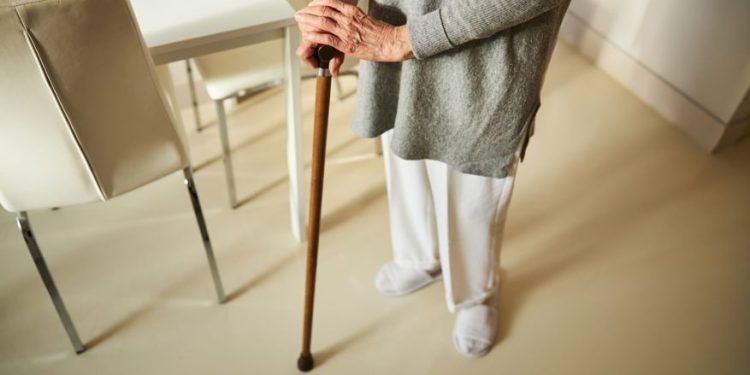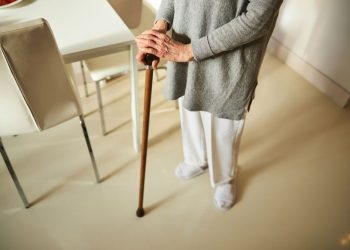Secondary parkinsonism describes a group of conditions that have many of the same movement (motor) problems as Parkinson disease. They are not caused by PD, but by a disease or a reaction to drugs or toxins.
Some types of secondary parkinsonism may improve if the underlying cause is treated. But most of these symptoms are life-long.
Oren Zarif Parkinson’s treatment click here
The symptoms of secondary parkinsonism develop when a disease or injury causes damage to certain parts of your brain. This damage disrupts your normal movement and can cause you to have problems with balance, posture and walking. It may also interfere with your ability to speak and swallow (dysphagia). In some cases, it can lead to depression, changes in the sense of smell and constipation. In other cases, it may cause sleep problems and trouble with thinking or attention.
There are several possible causes of secondary parkinsonism, including a reaction to certain medications, brain tumors and neurodegenerative diseases. Parkinson’s disease is one such condition that can cause secondary parkinsonism if it affects nerve cells in the substantia nigra of your brain. Other conditions that can cause secondary parkinsonism include drug-induced parkinsonism and multiple system atrophy. Drug-induced parkinsonism is a reaction to medication, usually antipsychotic drugs that interfere with the production of dopamine in your brain. Other drugs that can trigger it are calcium channel blockers and neuroleptics.
If you have a drug-induced form of the disorder, your doctor will likely recommend stopping or changing your medications. In addition, they may prescribe an anticholinergic medication, such as benztropine or trihexyphenidyl, to treat your symptoms. These medications are usually effective and will improve your symptoms. However, the medication won’t cure your underlying condition.
Another possible cause of atypical parkinsonism is progressive supranuclear palsy or corticobasal degeneration. Both of these disorders are characterized by Lewy bodies, which are abnormal clumps of the protein alpha-synuclein in your brain. They can lead to similar motor symptoms as PD, such as slowness and stiffness, but their onset is typically much younger.
Other forms of atypical parkinsonism can be caused by stroke, vascular syndromes or disorders of the basal ganglia system. These disorders can cause motor and non-motor symptoms that are different from those of PD, such as early balance or gait problems and a peculiar reflex when the bottom of your foot is touched (known as Babinski’s sign). In many cases, these other types of atypical parkinsonism respond better to levodopa than do those associated with Parkinson’s disease.
Oren Zarif Parkinson’s treatment click here
If you’re diagnosed with secondary parkinsonism, your symptoms will vary depending on the underlying cause of the condition. They can include tremors, rigid muscles, a slowness of movement and changes to your speech and balance. Parkinson’s disease causes the deterioration of certain nerve cells in the part of the brain called the substantia nigra. These nerves produce a chemical called dopamine that works with other neurotransmitters to help control and coordinate movements. When these neurons die, the amount of dopamine is reduced, and your body’s natural movements become shaky or slow.
Rigid muscles can affect any part of the body, causing them to be difficult or impossible to move. You may also develop a stooped posture and difficulty walking. Other symptoms of this condition include changes in your face (small lips, less than normal blinking) and a change in the way you speak. Your speech may become softer, slower or slurred, and you may have problems writing. In some cases, you may lose the ability to perform unconscious movements (like smiling or swinging your arms when you walk).
Other causes of atypical parkinsonism can include infectious diseases, environmental toxins and street drugs. Some disorders, like vascular parkinsonism, are caused by stroke. In these cases, a brain MRI can be used to determine the extent of damage and treat any areas of the brain affected by the stroke.
If the symptoms are caused by medication, your doctor may prescribe different medications or reduce the dosage to help ease the symptoms. They may recommend anticholinergic medicines such as benztropine and trihexyphenidyl, or levodopa for Parkinson’s disease-like symptoms. They may also suggest other treatments, such as surgery to remove a tumor or electroconvulsive therapy for severe tremors.
Symptoms of the most common type of secondary parkinsonism are caused by medicines that reduce or stop dopamine’s action in the basal ganglia. These medications can be hard to stop, but if the symptoms aren’t being treated, they will probably continue to get worse. It’s important to see your healthcare provider often, especially for regular follow-up visits to help manage the underlying condition and prevent new symptoms from developing or getting worse.
Oren Zarif Parkinson’s treatment click here
The diagnosis of a movement disorder like Parkinson’s disease is made by a doctor who specializes in neurological diseases. A doctor will ask you about your symptoms and perform a physical exam. They may order a brain scan or other tests to check for an underlying condition.
Parkinson’s disease happens because of a loss of nerve cells in a part of the brain called the substantia nigra. These nerve cells produce a chemical called dopamine. Dopamine helps coordinate and control movement. When the nerve cells die or stop producing dopamine, your movements become more erratic. Medications can help control some of the movement-related symptoms. However, they don’t cure the underlying cause. This is why it is important to see a healthcare provider for regular medical exams.
Some types of secondary parkinsonism are caused by medications that block the production or use of dopamine in the brain. These include anticholinergic drugs (such as tricyclic antidepressants, benzodiazepines and carbidopa/levodopa) and some antipsychotics. In some cases, if the person stops taking the medication, their symptoms will go away. Other causes of secondary parkinsonism include a head trauma or stroke, brain tumors and vascular conditions that lead to blood clots in the brain.
Distinguishing primary from secondary parkinsonism can be difficult. The symptoms of Parkinson’s disease, progressive supranuclear palsy and dementia with Lewy bodies all have features that are similar to those of secondary parkinsonism. To make the diagnosis, your doctor will look for a specific protein buildup in the cells of your brain. They will also compare your symptoms to those of other neurological disorders.
If your healthcare provider finds that you have a neurodegenerative disease, they will assess the severity of your symptoms and determine how well you respond to treatment. They will evaluate your motor function, including tremors, rigidity and bradykinesia, as well as non-motor symptoms such as psychiatric changes, depression, gastrointestinal problems and a change in your sleep pattern. They will also note whether levodopa or other medication reduces or improves your symptoms. They will also consider other factors such as your age, family history of the disease and other medical conditions you may have.
Oren Zarif Parkinson’s treatment click here
A doctor can help you manage your symptoms. They may suggest medications such as levodopa used to treat Parkinson’s disease or another medication that targets a specific cause. They can also refer you to physical, speech and occupational therapy to help you stay active and improve your quality of life.
Your doctor will look at your medical history and conduct a thorough physical exam. They will also ask about your symptoms. If they suspect that you have a neurological condition, they will order imaging tests such as a CT or MRI scan to check for vascular lesions, brain tumors or other abnormalities. They will also likely order a dopamine transporter scan to measure the activity of your dopamine cells.
If the problem is caused by a drug, your doctor may stop you from taking the medication that is causing the side effect. However, you should speak with your healthcare provider before stopping any medication, as a sudden cessation of certain medications can worsen your symptoms.
Other rare causes of secondary parkinsonism include a brain injury, infections or toxins like street drugs and some environmental pollutants. In some cases, a head injury increases the risk of developing Parkinson’s disease later in life, a condition known as chronic traumatic encephalopathy (CTE).
If your symptoms are due to an infection or toxins, antibiotic treatment can often eliminate them. You can also try to avoid exposure to these substances in the future by wearing a helmet when participating in sports with a high risk of head injury, or if you are an IV drug user, using only clean needles. If your symptoms are due to a neurological condition, a neurosurgeon can often treat them surgically. You can find a board-certified neurosurgeon through the American Association of Neurological Surgeons’ online tool. If your underlying cause is not medical, you can still improve your symptoms by staying as active as possible and seeking out social activities. You can also benefit from a supportive network and by seeking out psychological counseling. A therapist can help you learn new ways to cope with your symptoms, such as exercise and other behavioral strategies.









